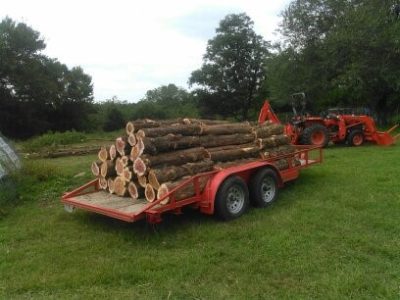When we think of weeds, we seldom include trees on the list of culprits. But some trees are so invasive and pervasive that they really ought to be on the list. Case in point: the red cedar.
My kids and I live on a 40-acre homestead in rural Missouri. Unfortunately, only about eight acres of it is in usable pasture, and the rest is a mix of small stands of hardwoods, briar patches and a whole lot of cedars. A whole lot!
In order to get more use out of the property, we have long wanted to get rid of the vast stand of cedars. The hardwoods we want — for future firewood and wildlife habitat — but the cedars really serve little purpose in either of these departments.
Sadly, the cedar on our property is not enough to interest a logging company. So we investigated the prospect of having it cleared by a hired crew. Estimates ran into thousands of dollars per acre! That idea quickly fell into obscurity. So, the Northern California boy that I am, I began to formulate my own plan for cedar eradication.
New Solar Oven Is So Fast It’s Been Dubbed “Mother Nature’s Microwave”
A bit of research revealed that there were a number of specialty mills in the area that would buy cedar logs for a variety of purposes. This woke up my inner Paul Bunyan, so I determined to pick up a saw and head into the woods to see what damage I could do.
The first thing I am going to make perfectly clear is that the phrase “easy work, excellent pay” does not apply here! “Get rich quick working from home” is also not the best description. Logging is a lot of work, especially if you wind up doing it on your own! But if you aren’t afraid to work up a sweat, brave some midgrade dangers, and live with a few sore muscles — and if you have marketable trees that you can’t afford to have removed, you may want to think about a family tractor logging operation.
Now it’s good news time! The equipment you will need to get going is probably already on your homestead, if you’re even halfway serious about your endeavor. You are going to need a good chainsaw with at least an 18-inch bar, a tractor, a good towing chain with a hook on each end, and a trailer to get your logs to the mill.
Before you get going, you will have to research what mills in your area are buying logs from the kind of trees you intend to cut. Not only will you need to find out if the mills are buying, but what size they want the logs to be. For example, the mill I sell to most often wants red cedar logs between 6 and 18 inches diameter (at the small end), and cut to 44 inch lengths. Mills vary in their requirements; another mill I sell to at times has a minimum 7 inch diameter and wants the logs in 8 foot lengths. Make absolutely certain you know where your logs are going, and what the parameters are or you can find yourself with a trailer full of unsellable wood!
Get Free Electricity — That Works Even During Blackouts!
Once you have established your market, it’s time for the fun part — cutting down trees! It’s not always as easy as it sounds, and this is the stage where an element of danger comes in. Make sure you learn your felling skills, the relation of your notch and your back cut to the direction of fall, in more open areas. If trees in thick growth fall the wrong way, they can end up hung up, and getting a hung tree down can be pretty dicey, especially on a windy day.
Once you have your trees down, you need to limb them. This is another area where caution is in order. There is a tendency to want to rush through this stage, but that can also get you hurt. A good pair of steel-toed boots is in order.
To reduce the number of trips, I leave trees full length to skid to the landing where the trailer is. This is where the tricks of the trade come in. I learned to skid logs a long time ago back in Northern California. Then, we had choker cables designed for the task. What I have found makes a great substitute is a three-fourths-inch chain with a hook at each end. The chain is wrapped around the log a foot or two back from the end you will be towing from. Get the chain as tight as you can and still be able to easily secure the chain back to itself with the hook. The other end of the hook goes to your tractor’s towing point. When you start your skid, the tension on the chain causes it to go tight on your log (“choking” it) for a trouble-free skid to your landing.
Back at the landing, logs are cut to length, scaled for diameter, and loaded on the trailer. I use pallet forks on my tractor’s bucket to ease the loading process. I use the 16-foot trailer for the Kubota tractor for log hauling. Once the load is securely tied down, it’s off to the mill.
This has been an excellent solution to my cedar problem, and a great supplement to my cash flow. A little hard work has turned this weeded land into a $300-a-load asset, and it is getting cleared at the same time.
Related:
The Very Best Woods For Wood-urning Stoves
Have you ever cleared land and sold wood? Share your advice in the section below:
Learn How To ‘Live Off The Land’ With Just Your Gun. Read More Here.
 Off The Grid News Better Ideas For Off The Grid Living
Off The Grid News Better Ideas For Off The Grid Living






